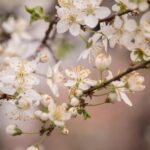Is your front yard in need of some drainage solutions, but you want to maintain its visual appeal? In this article, we’ll explore front yard drainage ditch landscaping ideas that not only serve a functional purpose but also enhance the overall look of your outdoor space.
Proper drainage is essential to prevent water accumulation, erosion, and potential damage to your property. At the same time, a well-landscaped drainage ditch can add aesthetic value to your front yard, creating an attractive focal point.
Assessing the drainage needs of your front yard is crucial in determining how to address any existing issues effectively. Identifying problem areas will help you choose the right plants and hardscaping elements for your drainage ditch. Selecting plants that thrive in wet conditions and can help prevent erosion is key to a successful landscaping project. Additionally, incorporating rocks, gravel, and other hardscaping elements can improve both functionality and visual appeal while enhancing the overall design of the area.
In addition to plant selection and hardscaping, adding outdoor lighting to the drainage ditch area can transform it into a focal point of your front yard at night. We’ll explore creative ways to incorporate lighting that not only enhances the aesthetic appeal but also adds safety and security benefits.
Lastly, we’ll provide maintenance and care tips to ensure that your landscaping stays looking its best while maintaining proper function of the drainage system. Stay tuned for inspiration on unique designs and sustainable options for front yard drainage ditch landscaping.
Assessing the Drainage Needs
When it comes to landscaping a front yard drainage ditch, the first step is to assess the specific needs of your property. Proper drainage is essential to prevent water buildup and potential damage to your home’s foundation. One way to determine the drainage needs of your front yard is to observe how water flows during a heavy rainstorm. Look for areas where water accumulates or where erosion is evident, as these are likely problem areas that need attention.
To identify problem areas in your front yard, take note of any standing water after rainfall, as well as any signs of erosion. Areas with poor drainage may have patches of muddy soil or dying grass due to excessive moisture. Make a map or diagram of your front yard and mark these problematic spots. This will help you develop a plan for addressing the drainage issues effectively.
Addressing Drainage Issues:
Once you have identified the specific drainage needs and problem areas in your front yard, it’s time to develop a plan. Consider the following steps:
- Installing French drains in key problem areas
- Creating swales or berms to redirect water flow
- Planting moisture-loving plants in low-lying areas
- Adding gravel or rocks to promote better water absorption
By assessing the drainage needs and identifying problem areas, you can create an effective plan for landscaping your front yard drainage ditch while also ensuring proper functionality for years to come. Remember that professional help may be necessary in dealing with severe or complex drainage issues.
Choosing the Right Plants
When it comes to landscaping a front yard drainage ditch, choosing the right plants is crucial for both functionality and visual appeal. By selecting the best plants for a drainage ditch, homeowners can prevent erosion, improve water absorption, and enhance the overall aesthetic of their outdoor space. When considering front yard drainage ditch landscaping ideas, it’s essential to focus on plant species that can thrive in wet conditions and contribute to the health of the ecosystem.
One excellent choice for planting in a front yard drainage ditch is the purple loosestrife (Lythrum salicaria), which features vibrant purple blooms and thrives in moist soil. This hardy perennial not only adds beauty to the landscape but also helps prevent erosion with its deep-reaching roots. Another ideal option is the soft rush (Juncus effusus), a grass-like plant that thrives in damp environments and aids in water filtration.
In addition to traditional flowering plants, incorporating native grasses like switchgrass (Panicum virgatum) or prairie cordgrass (Spartina pectinata) can provide both erosion control and visual interest. These grasses are well-suited for planting along the edges of a drainage ditch and can create a naturalistic, meadow-like appearance. By carefully selecting plant species that work well in wet conditions, homeowners can create an attractive and sustainable landscape around their front yard drainage ditch.
| Plant Species | Main Features |
|---|---|
| Purple Loosestrife | Vibrant purple blooms, deep-reaching roots, prevents erosion |
| Soft Rush | Grass-like plant, thrives in moist soil, aids water filtration |
| Switchgrass | Native grass species, erosion control, visual interest |
| Prairie Cordgrass | Meadow-like appearance, ideal for wet conditions |
Incorporating Hardscaping
When it comes to landscaping a front yard drainage ditch, incorporating hardscaping elements can significantly improve both the functionality and visual appeal of the area. By strategically adding rocks, gravel, and other hardscaping features, you can enhance the drainage capabilities of the ditch while also creating a visually appealing landscape.
Here are some creative ways to incorporate hardscaping elements into your front yard drainage ditch landscaping:
1. Rocks: Large rocks can be strategically placed along the edges of the drainage ditch to help prevent erosion and create a natural, organic look. Smaller rocks can also be used as ground cover within the ditch to aid in water absorption and reduce soil erosion.
2. Gravel: Gravel is an excellent hardscaping material for drainage ditches, as it allows for efficient water flow while adding texture and visual interest to the landscape. Consider using different sizes and colors of gravel to create unique patterns or designs within the ditch.
3. Pavers: Incorporating pavers into the design of the drainage ditch can not only improve its functionality by providing stable footing for maintenance but also add an elegant touch to the landscape. Pavers can be used to create pathways or stepping stones through the ditch, making it easier to access different areas for maintenance purposes.
4. Retaining Walls: In situations where erosion is a concern, incorporating retaining walls made of stone or concrete blocks can help stabilize the soil and prevent runoff from washing away important landscaping features or causing damage to nearby structures.
By incorporating these hardscaping elements into your front yard drainage ditch landscaping, you can effectively improve its functionality while creating an attractive outdoor space that adds value to your property.
Enhancing the Ditch With Lighting
When it comes to front yard drainage ditch landscaping ideas, the addition of outdoor lighting can truly elevate the aesthetic appeal and functionality of the area. Proper lighting not only enhances the visual beauty of the drainage ditch but also serves a practical purpose by providing illumination in the front yard at night. This section will cover various creative ideas for adding outdoor lighting to the drainage ditch area, making it a focal point of the front yard after dusk.
Accent Lighting and Path Lights
One popular option for enhancing a drainage ditch with lighting is to install accent lights or path lights along the edges of the ditch. These types of fixtures can highlight the contours and natural features of the ditch while providing visibility for anyone walking near it in the dark. Low-voltage LED lights are an energy-efficient and cost-effective choice for this purpose, and they come in a variety of styles and designs to complement any landscaping theme.
Floating Solar Lights
For a unique and eco-friendly lighting option, consider placing floating solar lights in a drainage ditch that holds water seasonally. These small, waterproof lights automatically charge during the day using solar energy and then illuminate at night. They create a charming effect on still water surfaces while adding a touch of whimsy to the landscape design.
Downlighting From Trees or Structures
To create an inviting ambiance within your front yard, strategically position downlights in nearby trees or on structures such as fences or pergolas to cast a soft glow over the drainage ditch. By aiming light downward into the area, you can illuminate key features without causing glare or harsh shadows. This method also allows for more flexibility in adjusting light levels and changing lighting angles as needed.
These lighting ideas offer just a few options for enhancing a front yard drainage ditch with both style and functionality. Whether you prefer subtle accent lighting or bold statements with floating solar lights, incorporating outdoor lighting can transform your drainage ditch into an eye-catching element of your landscape design at all hours of the day.
Maintenance and Care Tips
Regular Inspection and Clearing
Regular inspection is crucial for maintaining the landscaping in the drainage ditch. Check for any obstructions or debris that may impede the flow of water, and clear them as needed. This could include fallen leaves, branches, or other natural materials that may accumulate over time. It’s also important to inspect the condition of any hardscaping elements, such as rocks or gravel, and make sure they are in place and functioning as intended.
Pruning and Trimming
Incorporating plants into the drainage ditch landscaping requires regular maintenance to keep them looking their best. Prune and trim plants as needed to prevent overgrowth, which can impede water flow and create a messy appearance. Be mindful of any plant species with aggressive growth habits that may require more frequent pruning to keep them in check.
Soil Erosion Prevention
To ensure proper function of the drainage system, it’s important to prevent soil erosion within the ditch. Utilize erosion control methods such as planting native grasses with strong root systems or incorporating erosion control blankets to stabilize soil until plants are established. Regularly monitor for signs of erosion and take preventative measures as needed to maintain the integrity of the drainage ditch.
By following these maintenance and care tips, you can keep your front yard drainage ditch landscaping looking its best while also ensuring that your drainage system functions properly. With proper care and attention, your landscape can be both aesthetically pleasing and functional in managing excess water on your property.
Creative Design Ideas
Creating a visually stunning and unique front yard drainage ditch landscaping design requires a combination of creativity, planning, and careful plant selection. One idea to consider is creating a rock garden within the drainage ditch area. This not only adds visual interest but also helps with erosion control. By strategically placing various sizes and types of rocks, you can create an eye-catching display that enhances the overall look of your front yard.
Another creative design idea for a front yard drainage ditch is to incorporate water-loving plants. Selecting plants that thrive in wet conditions not only adds color and texture to the landscape but also helps absorb excess water from the drainage ditch. Examples of water-loving plants include ferns, irises, marsh marigolds, and Japanese maples. Additionally, adding moisture-tolerant ground covers can help reduce soil erosion while enhancing the aesthetic appeal.
For a more modern and architectural look, consider incorporating decorative concrete pavers along the edges of the drainage ditch. This hardscaping element not only provides a clean and structured appearance but also serves as a functional pathway or border for the landscaping area. Using concrete pavers can create visual interest while helping to prevent soil erosion and maintaining proper water flow within the ditch.
By implementing these design ideas along with careful plant selection, hardscaping elements, and creative lighting options, you can transform your front yard drainage ditch into a visually stunning focal point that enhances your overall landscape.
| Creative Design Ideas | Benefits |
|---|---|
| Rock Garden | Enhances visual appeal; aids in erosion control |
| Water-Loving Plants | Adds color and texture; helps absorb excess water |
| Decorative Concrete Pavers | Provides structured appearance; prevents soil erosion |
Sustainable and Eco-Friendly Options
In conclusion, landscaping a front yard drainage ditch is not only essential for proper water drainage but also presents an opportunity to enhance the aesthetic appeal of your outdoor space. By assessing the specific drainage needs of your front yard and identifying problem areas, you can choose the right plants that thrive in wet conditions and help prevent erosion.
Additionally, incorporating hardscaping elements like rocks and gravel can improve both functionality and visual appeal, while adding outdoor lighting can make the drainage ditch area a focal point of the front yard at night.
As part of maintenance and care tips, it’s important to ensure that the landscaping in the drainage ditch is kept looking its best while ensuring the proper function of the drainage system. From regularly weeding and pruning to monitoring water flow, these efforts will contribute to the overall success of your front yard landscaping project.
Furthermore, considering sustainable and eco-friendly options such as rain gardens and native plant species is a great way to contribute to environmental conservation while beautifying your surroundings. These options not only provide efficient water management but also support local biodiversity.
Overall, it’s clear that sustainable and eco-friendly front yard drainage ditch landscaping options offer a myriad of benefits beyond solving practical issues. Whether it’s creating a visually stunning landscape or contributing to environmental sustainability through conscious gardening choices, homeowners have plenty of opportunities to turn their front yard into a functional yet beautiful outdoor space.
By following these ideas and approaches outlined in this article, anyone can achieve a well-landscaped front yard that effectively manages water while enhancing curb appeal.
Frequently Asked Questions
How Do I Make My Drainage Ditch Look Nice?
Making your drainage ditch look nice can be achieved by incorporating decorative rocks, landscaping plants, and proper maintenance. Adding river rocks or pebbles along the banks of the ditch can provide an aesthetic touch.
Planting native grasses, wildflowers, or shrubs alongside the ditch can also enhance its appearance while helping with erosion control. Regular maintenance such as removing debris and keeping the area tidy will also contribute to a nicer-looking drainage ditch.
How Do You Landscape a Front Yard With a Slope?
Landscaping a front yard with a slope requires careful planning and consideration of erosion control. Terracing the slope with retaining walls or steps can create multiple levels for planting beds or decorative features.
Using groundcover plants and mulch can help prevent soil erosion on the slope while adding visual interest. Additionally, incorporating hardscaping elements such as pathways or stone features can further enhance the landscape design of a sloped front yard.
How to Design Drainage Ditch?
Designing a drainage ditch involves considering factors such as water flow, soil type, and potential erosion issues. It’s important to plan for proper grading to direct water away from buildings and towards the desired outlet.
Incorporating elements like swales or berms can help slow down and filter water as it moves through the drainage system. Selecting appropriate vegetation to stabilize the banks of the ditch is also crucial in preventing erosion and improving the overall design of the drainage system.

Welcome to my gardening blog! I am passionate about plants and enjoy sharing my knowledge and experiences with others. In this blog, I will write about everything related to gardening, from tips on how to get started to updates on my own garden projects.





